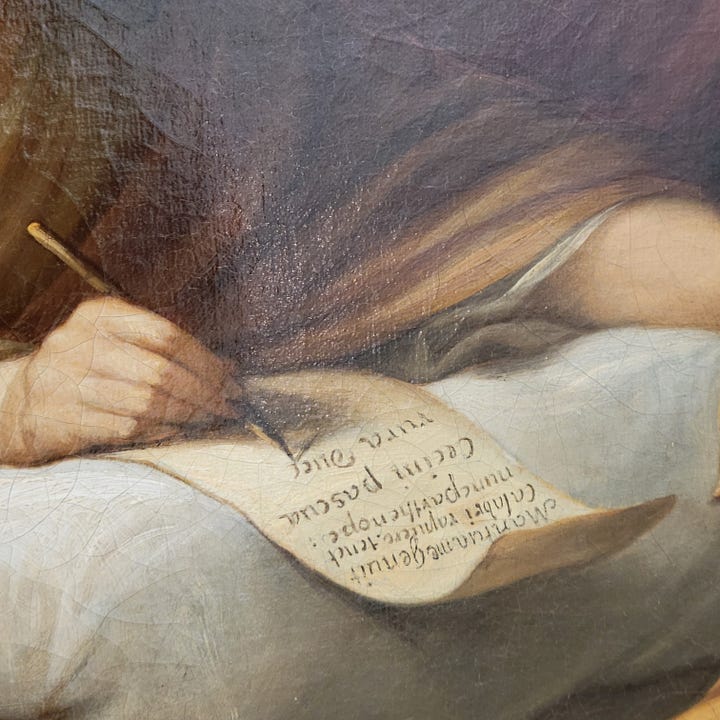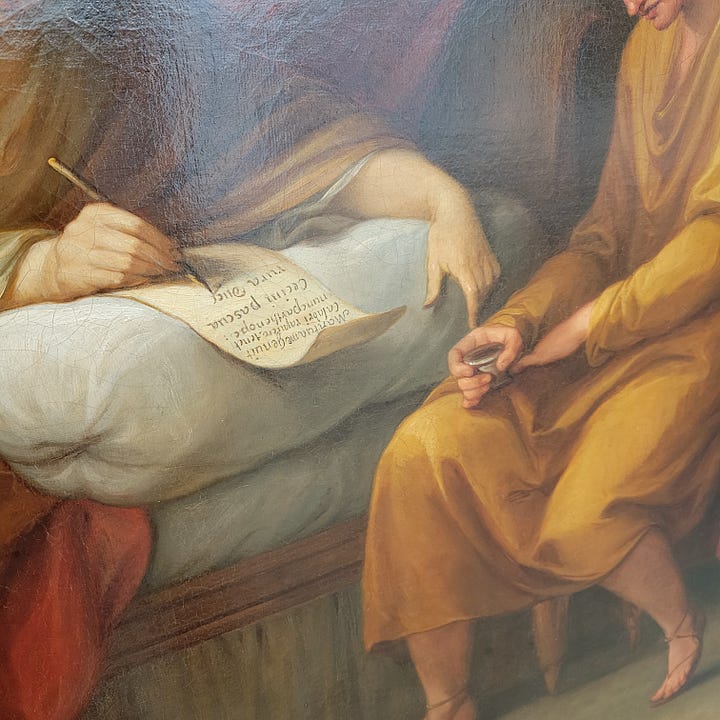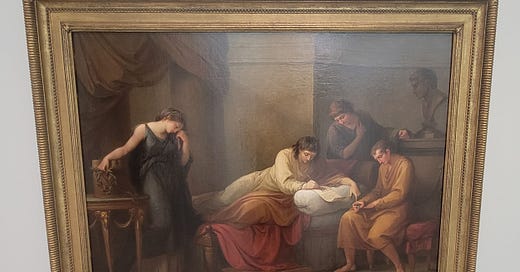Have you had the experience of buying a new car and suddenly you’re noticing the same model everywhere? I’ve been reading the book Paper: Paging Through History (Mark Kurlansky, 2016) and I’m noticing paper everywhere.
Sunday we visited the Carnegie Museum of Art in Pittsburgh where I came across a 18th century oil on canvas painting by Swiss artist Angelica Kauffman (1740-1807) titled Virgil Writing his Epitaph at Brundisi.
Had it not been for the book I doubt I would have noticed the writing instrument and writing material and wondered about the accuracy of the artist’s portrayal of an event that happened nearly two thousand years earlier — Virgil died in 19 BC.


From my amateur eye, all appears well. According to Kurlansky the bronze stylus was in use in Italy at the time, as was the papyrus (notice the stiffness). And notice the man holding an ink well. The Romans used a sulphate base ink made from ground iron mixed with tannins from gall nuts.
And the writing itself seems accurate as Virgil’s epitaph was reportedly,
Mantua me genuit; Calabri rapuere; tenet nunc Parthenope. Cecini pascua, rura, duces (Mantua gave birth to me, the Calabrians took me, now Naples holds me; I sang of pastures [the Eclogues], country [the Georgics] and leaders [the Aeneiad]).
Considered one of Rome’s great poets of the time, Virgil also influenced great Christian writers who came later, including Jerome and Augustine. Here’s a link to a short piece from 1924 in The Classical Weekly titled The Influence of Vergil on St. Jerome and St. Augustine.




